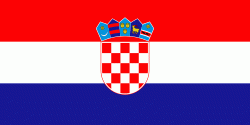Cres
With an area of 405.78 km2, Cres is the same size as the neighbouring island of Krk, although Krk has for many years been thought the largest of the islands. Cres has a population of 3,079 (2011).
Cres and the neighbouring island of Lošinj once used to be one island, but were divided by a channel and connected with a bridge at the town of Osor. Cres's only freshwater source is Lake Vrana.
Cres has been inhabited since the Paleolithic time period. Its name predates classical antiquity and is derived from Proto-Indo-European *(s)quer- ("cliff"). Although this is one view, another more historically correct is from classical antiquity, when the town was founded and inhabited by ancient Greeks, and called it Chersos (Χέρσος); "chersos" in Greek means "barren land", "uncultivated land" and "dry heaths". Later, "Chersos" was resounded to "Cresta", from which eventually the modern name "Cherso-Cres" is derived.
Cres was later ruled by the Greeks and, by the 1st century B.C., the Roman Empire make province of Liburnia. After the fall of the Roman Empire the island was taken over and became a part of the Byzantine Empire, and remained this way for centuries, as one of the Dalmatian city-states. Slavs first arrived on the island in the early 9th century (believed to be somewhere around 812).
Around 866 the Byzantine inhabitants saw their first conflicts with the Republic of Venice. The Venetians eventually took control of Cres and the neighboring islands in the 10th and 11th centuries.
However, in the islands is being ruled for 400 years the Venetians took control. After Napoleon's victory over the Venetians, the island came under Austrian rule. After the defeat of Austria by Napoleon in 1809 the islands became part of the French Empire.
After the fall of Napoleon, Austria once again took control of the island for 100 years. During this time the economy developed with olive trees, sage, and other plants becoming key to the success of the island. At the end of World War I, with the Treaty of Rapallo signed in 1920, the island was once again handed over to Italy. This lasted until 1947 when the Islands, along with Istrian Peninsula, were assigned to Yugoslavia.
The island has gone through an agricultural downturn as many residents left the island in search of a better life on the mainland and abroad. This has resulted in many former agricultural areas becoming overgrown with local vegetation. Recently people, primarily retirees, have been returning to live on the island. Tourism has become an increasingly important industry and the population experiences significant seasonal variation.
Map - Cres
Map
Country - Croatia
Currency / Language
| ISO | Currency | Symbol | Significant figures |
|---|---|---|---|
| HRK | Croatian kuna | kn | 2 |
| ISO | Language |
|---|---|
| HR | Croatian language |
| SR | Serbian language |

















